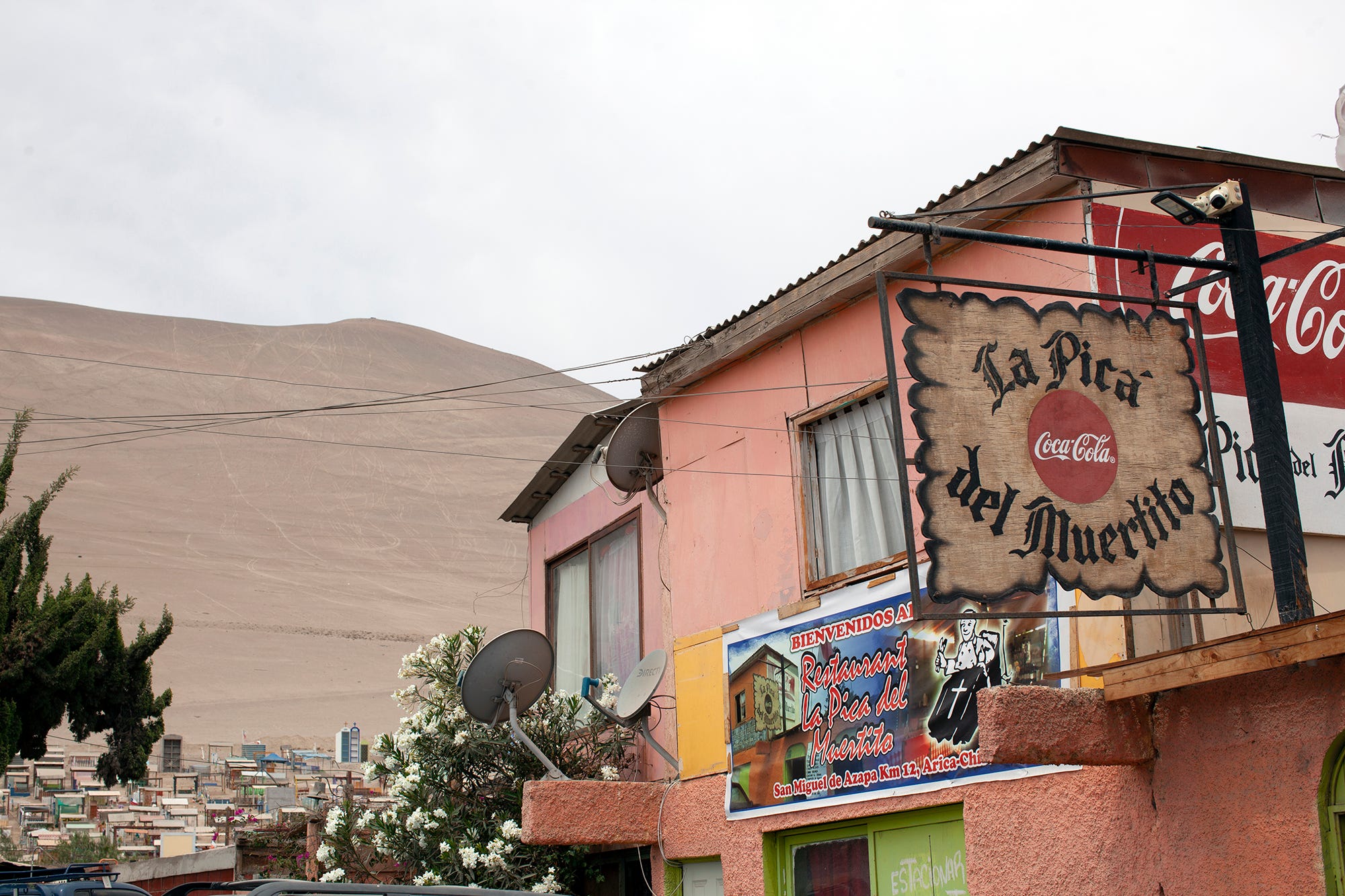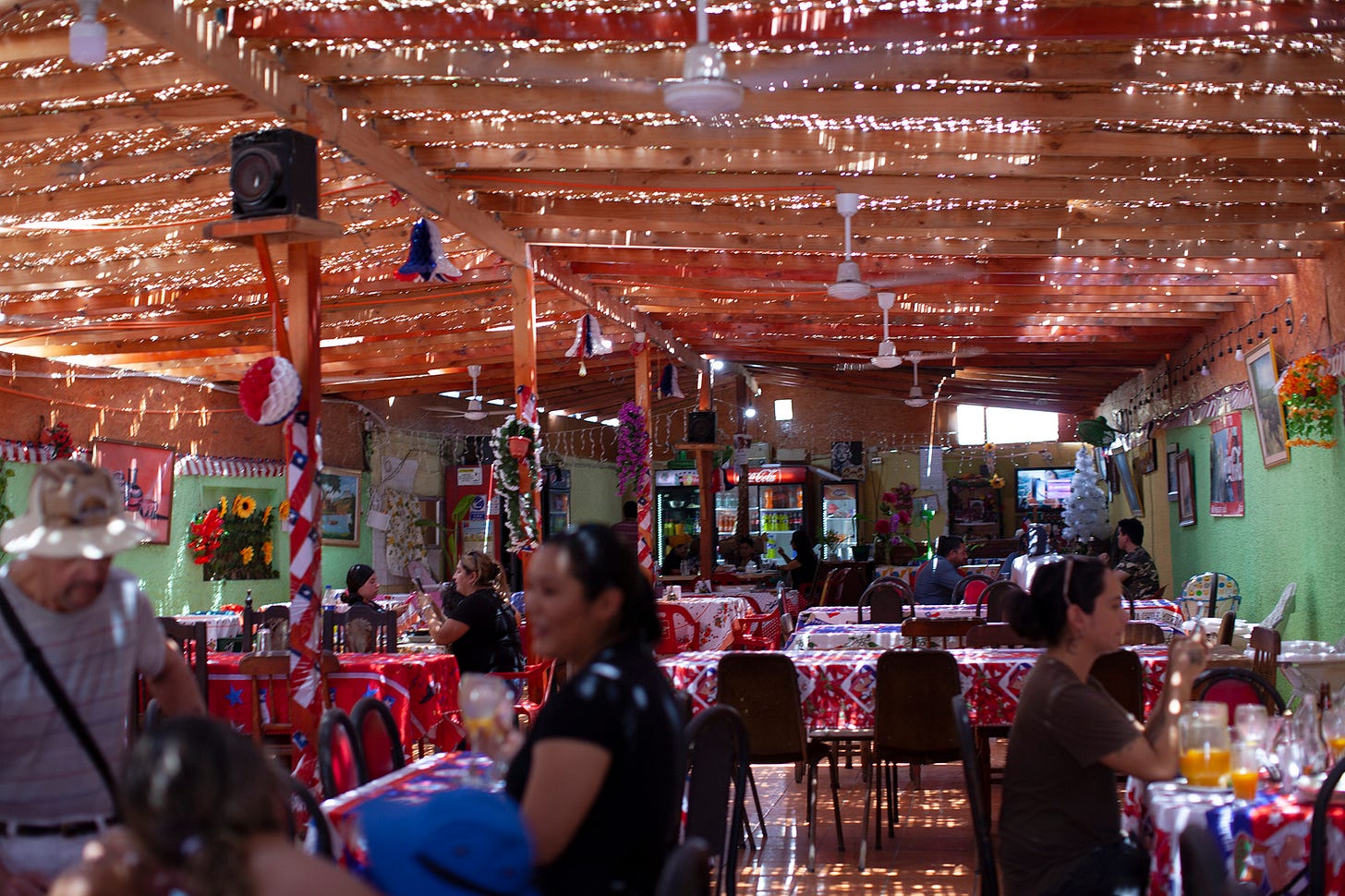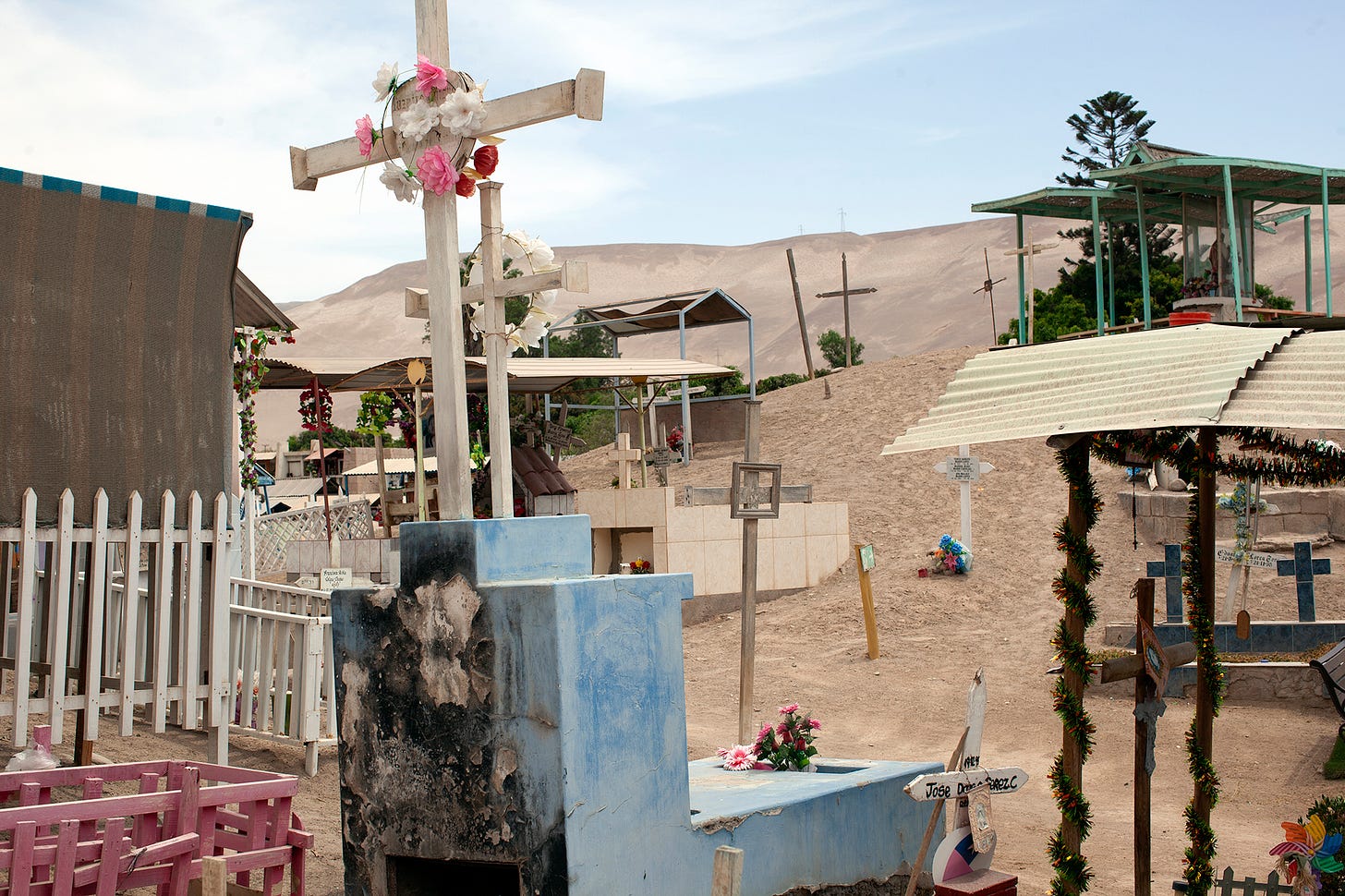
Last month I found myself in Arica, a port city in the far north of Chile near the Peruvian border, for the second time in two years. After spending what equates to $3 for a big bowl of sea urchin ceviche in the fish market, I wanted something heavier. There are some decent seafood restaurants near the beach, as well as stalls in Mercado Colon that I’ve been to before, but I had a little bit of time to explore beyond the city. It’s mostly unpopulated desert once you reach the city limits, so I was limited to just a few villages that hugged roadways heading into the Andes towards Bolivia. That’s where I found La Pica del Muertito, a restaurant beside a cemetery, in the Valle de Azapa.
The Azapa Valley is known for being a string of green farmland in the otherwise driest desert in the world. It’s a place where it doesn’t rain. I noticed the Rio San José that runs through the valley and has provided irrigation to olive groves that were planted the sixteenth century, was bone dry as I rode through. It’s raining less in the Andes than it used, so lagoons aren’t filling up to feed the San José. The sun is getting hotter too. Yet, farms keep expanding here. Tomatoes and bell peppers are being grown in increasing demand to supply Chilean supermarkets when the winter hampers growth in the south of the country. Migrants from Peru and Bolivia keep moving in to work the land, putting additional pressure on the aquifers. Wells are being dug deeper and deeper to extract whatever water is left.
I found La Pica del Muertito on Google Maps by just clicking on whatever restaurants I came across. It’s something I do fairly often when traveling, just to see what I can find. It was directly beside the San Miguel de Azapa cemetery, which was a Pre-Columbian burial ground that never stopped being used. This was once the home of the Chinchorro culture, whose geoglyphs are scattered throughout the valley and once specified where llamas and alpacas could be traded. The Chinchorro are said to have worshipped the dead and mummified remains, dating back some 7,000 years ago, the oldest mummies on ever found anywhere, were discovered by archeologists in 1918. The lack of moisture helped preserve them.
The name La Pica del Muertito translates to “The Bite of the Dead,” though it’s always also play on the word picada, a typical restaurant. When I saw the logo, of a man rising out of a coffin from the dead, I made it an imperative to go. When I asked a taxi to take me to San Miguel de Azapa from Arica he asked if I was going there. “Get the pastel de choclo. Que rico,” he told me.
As you walk in the restaurant you enter a large dining hall, likely not updated in any form since the restaurant opened in 1975. There was a thatched roof that let in just enough light and adobe walls painted in bright greens and yellows. The restaurant was recognized in 2012 as one of the 62 best picadas in Chile by the Ministry of Culture, though that seems to be its only recognition outside of Arica.
“There’s no menu,” the waiter tells me. “It’s just in my head.”
He rambles off a list: pastel de choclo, baked pork ribs, lomo al disco, picante de guatitas (tripe stew). I order the pastel de choclo and its done right. They sprinkle sugar on the top and the mixture is goery and carmelized, sticking to the sides of the librillo, the black clay pot it was cooked in. A chicken leg and a few olives from the nearby groves were hidden within.
If the valley dries up will the restaurant stick around? Will anyone live here, way out in the lonely desert, anymore? The chain of human habitation, including the plots of choclo planted along the river, hasn’t been interrupted in millenia. As I walked out the front door the entrance to the cemetery was right there. Any cars pulling up were going to one or the other. I just happened to be going to both.
Keep reading with a 7-day free trial
Subscribe to New Worlder to keep reading this post and get 7 days of free access to the full post archives.





